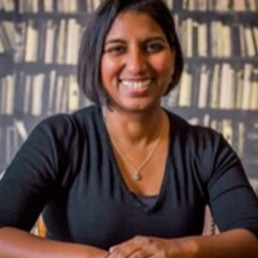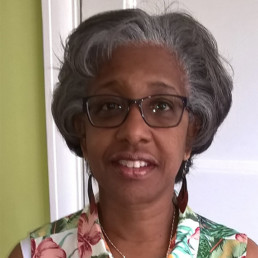What's in a Name?

Written by Malarvilie Krishnasamy
Malarvilie is a seasoned leadership consultant, coach, and trainer with over 20 years of experience in education. As a former history teacher and senior leader, she passionately advocates for coaching as a catalyst for transforming school cultures. Malarvilie offers accredited courses, endorsed by The Institute of Leadership, which develop emotional intelligence and assertive leadership skills. Her reflective and supportive programmes enhance staff morale and well-being, promoting humanity in leadership. A vocal proponent of equity, diversity, and inclusion, she actively engages as an ally through speaking engagements, workshops, and amplifying the work of others. Malarvilie is also deeply committed to promoting Personal, Social, Health, and Economic (PSHE) education, recognising its pivotal role in nurturing well-rounded individuals.
“What’s in a name? That which we call a rose
By any other name would smell as sweet.” Juliet
Do names matter?
According to Shakespeare, not so much.
My name is Malarvilie. It may seem unusual but in India, Malaysia and Sri Lanka amongst the Tamil, Malayalam and Telungu communities (about 200 million people) it’s the equivalent of Sharon or Kate.
In my parents’ culture, the father’s first name is the family surname. My dad’s name was Krishna and his dad’s name was Rajaiyan. When the British closed down their naval base in Singapore, my dad became jobless but was offered a British passport as Britain needed workers. As he had 3 kids he jumped at the chance to work in the ‘motherland’. On his passport, the British added the ‘samy’ to Krishna. They did this often. Ever wondered why there are so many Patels in India? Much like ‘Jones’ for the Welsh and in Ireland, the English changed many names e.g.instead of Tadgh, they’d rename them ‘Tim’.
Malar means flower. Vilie means eyes. It sounded like I looked like an alien when I was born. I’ve clearly grown into my eyes. So they named me Malarvilie which together means a flower in bloom. My husband, Tim rips me to pieces every now and then about it.
When I was born, my dad wanted my grandad’s name added to my birth certificate as it’s an ancient Indian name and he was proud to have a child born in London. But my parents’ English wasn’t great in 1973. So my birth certificate says my name is Malarvilie Krishnasamy Rajaiyan. Even at my dad’s funeral, his name was wrong. When I mentioned it, a family member said ‘Oh he didn’t mind’. Is that the point? I also believe he did mind.
The Ting Tings understood!
In certain cultures they don’t correct you. In the UK there’s an awful habit of changing names to suit the English pallet. Or worse, it’s changed for you. Age 3, my childminder called me Mandy.
I’ve had a range of nicknames over the years:
– Mandy
– Malibu
– Milli Vanilli
– Mallory
My favourites are: ‘Malarvilie Christened-a-Salami’. I also found ‘Malarvilie Ham-bacon-Sarny’ amusing.
Even my parents called me Malar. Apparently by the time they said ‘vilie’, I was already there.
But since 6th form I’ve been Mal.
Teaching
As a teacher, in our first lesson together, I’d tell the kids all the nicknames I’ve had and put on the board Krish/na/sa/my. I’d say I’ve heard all the nicknames as a kid but I couldn’t do anything then, now as a teacher I can hand out detentions! I’d also say I expect them to say my name properly and I will ensure I say their name properly. Some children would say ‘Call me whatever’. But I’d insist they tell me how to say their name.
As a teacher in one school, on my first day I introduced myself to staff as Malarvilie. Within a few hours everyone was calling me Mal, without permission, some without trying, some with a look of panic asking ‘do you have a short version?’ It was disheartening.
Smash the Patriarchy!
We got married in September. I didn’t change my name, as it’s my name. But Tim added Rajaiyan to his name. Our 2 kids have Rajaiyan as their middle names. It means ‘victorious king’. Our eldest is named Taigh Rajaiyan McCullagh, you can see his heritage in his name – Indian Irish. I feel a sense of pride when I see my children’s names in print.
In the last 30 years, no one has called me Malarvilie until now.
I moved to Spain. At passport control in Valencia, the guy looked at my name and said ‘Malarvilie’ I nodded in shock and he asked ‘Is that correct?’ It was perfect. The Spaniards roll their ‘r’s so it’s easy for them. They’re also not afraid of long names. Unfortunately, Mal means’ bad’ or ‘evil’ in Spanish so saying ‘My name is Mal’ would be problematic. So, I introduce myself as Malarvilie. Tim has started calling me Malarvilie too as introducing me as ‘evil’ doesn’t feel right to him.
In Spain, in a funny way I feel more whole and less apologetic for my heritage.
So, what’s in a name? A lot actually.
The Words We Choose, the Words We Use

Written by Chris Richards
MEd in Applied Linguistics and currently works as a Teacher Mentor in Madrid
This year, the blogs I’ve written as part of the #MonthlyWritingChallenge have often explored the etymology of the theme chosen. Language and linguistics is my field and I suppose I am interested in exploring where the words we use come from and how they change.
Although my pedagogical roots lie in a (now demolished) secondary school classroom in Birmingham, I now teach English as a foreign language in Madrid. Appropriacy is a key concept in language teaching. Appropriacy is about ‘whether a word is suitable for the context it is being used in. It is an important aspect of language but an extremely complex one, as decisions about how to say things depend on understanding exactly what is right for the context and the culture’ (British Council). Just knowing the spelling, pronunciation, meaning and morphology (how the word changes according to tense or person) isn’t enough; you need to know the context(s) in which you can use the word. Think about the contexts in which you might use the following range of greetings: ‘Good morning’, ‘Hello’, ‘Hi’, ‘Hey’, ‘Alright?’ and perhaps you use a few more. They’re not interchangeable and this is appropriacy. New speakers of a language have to learn more than the vocabulary and the grammar, they also have to learn when and where and with whom words can be used. What does this mean for native speakers, though? The challenge for us is that like every other aspect of language (spelling, pronunciation, meaning, to name but three), appropriacy is always changing. And we need to keep up. Complaints about language change are commonplace: common across historical time and across languages. “Why can’t we say X anymore?”or “I hate that people say Y now, that word always sounds hateful to me”. Such comments make me think about the story of King Canute commanding that the tide stop. Language change is normal.
Conceptual baggage is another important concept to consider. Conceptual baggage is the associations we have with words and such baggage varies from person to person. As a result, effective communication takes account of these potential associations and when we are speaking formally, or with strangers, we probably avoid potentially problematic, colloquial terms in order to reduce the chance of causing offence. A perfect example is the word “queer”. To some people, it’s an inclusive term that they embrace; for others, especially those who have been on the receiving end of its use as a derogatory term, it retains its power to hurt. The words we choose to use depend on context. Appropriate words in a situation vary across historical time (common words becoming slurs, slurs being reclaimed and embraced) and they vary according to the audience (the words you use with your mum are different to the words you use with your friends, your boss, your students, and so on).
It’s often said that all teachers are teachers of literacy and it follows that all of us are teachers of language. We all have a role to play in showing our students that language is not fixed, but shifting, and its use is contextual. This is not about being Orwellian language police, proscribing terms without explanation. This is about providing an explanation and explaining the importance of context. Take the example of swear words: there are adults who don’t use them, but many do and children hear them being used. Simply telling children that they shouldn’t swear is likely to be ineffective. However, explaining that adults do swear in certain contexts but not in others is more likely to have the desired effect. If we want young people to use language effectively and with empathy, they need to be taught the rules. The rules of appropriacy are as important as spelling and grammar: why one word is considered offensive and why another is considered a more polite and appropriate alternative.
Empowering Our Students - Let’s Start With Their Names

Written by Anu Roy
Anu is a TeachFirst leadership Alumni and digital trustee and teacher committee lead for charities in England and Scotland. She is currently a digital curriculum development manager and works in inclusive education projects incorporating tech.
I remember as a quiet and nervous NQT attending a meeting where myself and other English staff would chat about our incoming Year 7 cohort. As we worked our way through the Excel spreadsheet, a joke started forming where a member of staff referred to a student as ‘Chaka Khan’- alluding to the famous singer who goes by the same name. It felt harmless and I am sure the intention was not to cause embarrassment or mock names, but it felt wrong regardless. I would know. I am sure this happened when I moved from India to Wolverhampton to start Year 7 in a predominantly white school.
I remember all too clearly squirming at the back of a classroom when a teacher confidently made their way through ‘Beth, Laura, Jess, Zoe’ and then the dreaded moment came closer. The teacher paused, squinted at the list with a frown on their face.
‘Ama?
Amu?
Anaaa…’
Now the girls in the room were sniggering. They glanced back at me quickly and I did my best to force a small, to laugh it off even though I felt so humiliated inside. Especially because at that very moment the teacher who could not pronounce
‘Ah-New-Rad-ha’ gave up altogether and said, ‘it’s too much for me. Can we just call you Annie?’.
To have my name, my Bengali name given to me by my grandfather- a name which means ‘goddess of the gods’- reduced so casually to a westernized format that would be comfortable and convenient for my white teacher set the tone for my experience of education that year in Wolverhampton. It made me squirm whenever attendance was taken, it made me hesitant to raise my hand despite being confident about my subject knowledge and eventually-it made me reluctant about going to school. I wanted to feel invisible, to blend into the classroom walls because I was not British enough, I did not feel valuable.
So fast forward 11 years and now I am the teacher. I am supposed to have more knowledge, more acceptance and confidence. However, in that meeting when this student had their name turned into a joke, I felt the same pangs of feeling small, feeling embarrassed on their behalf.
So I spoke up, “it’s actually Shah-kir. Shakir Khan”. This was followed by some nodding, an acknowledgement of the changed atmosphere in the room and we moved on quickly to the next student.
BAME students experience incidents like this every day and this must change. Here are some simple ways for educators to ensure this is avoided:
- Ask them exactly how you would like their name to be pronounced
- If you can, ask them where their name comes from. Many ethnic-minority names have symbolic religious and cultural meanings.
- Do not hesitate to correct colleagues who mispronounce a name in front of you if you are aware of the correct version
Our names are the blueprint of our identity. Let us ensure we honour this for our students.
The Kate Clanchy Memoir: A Red Flag for DEI

Written by Chiaka Amadi
Chiaka has almost 40 years of experience as a teacher and EAL leader at school and local authority level. Her work as an independent consultant and trainer focuses on language acquisition, literacy development and multilingualism.
In August, I read a succession of tweets about attacks on three WoC writers, Chimene Suleyman, Monisha Rajesh and Sunny Singh which alerted me to the controversy around a book ‘What I Taught Kids and What They Taught Me’. https://minamaauthor.com/2021/08/15/a-controversy-i-recently-read/?like_comment=242
The WoC had challenged the racialised and stereotyped language used by its author, Kate Clanchy, to describe her students. Numerous passages were criticised by a range of commentators citing derogatory descriptions of neurodiverse students; of some students’ choice of clothing; of the very carrying of their bodies. The lively discussion of the book on #DiReadsClanchy was then illuminating in helping me to understand the range of concerns concerning the depictions of the students.
What astonished me the most, however, was how such content could have ever been published as the considered writings of a teacher. How did the editors at Picador, Ms Clanchy’s publishers, perceive her writing? How could those critiqued sections of the book not have rung alarm bells during the editing process?
Even if knowledge of the protected characteristics in the Equality Act 2010 didn’t alert editors to the need for sensitivity and respect in relation to Ms Clanchy’s students, a quick read of Part Two of The Teachers Standards should at least have made them ask if its “high standards of ethics and behaviour” were being fulfilled: https://assets.publishing.service.gov.uk/government/uploads/system/uploads/attachment_data/file/1007716/Teachers__Standards_2021_update.pdf
Did the editors really believe that the words in front of them truly treated pupils with “dignity” and were “rooted in mutual respect”?
It is the children in the book who flag up that there are different life realities, experiences and perceptions at work. Ms Clanchy acknowledges that they teach her “how white I am” and explains to the reader the way the children encode her “super-empowered” membership of the “world’s ruling class” into the word “English”. Did the editors really not feel the need to explore that dynamic both as it appeared on the page and as it evolved as a conceit throughout the book?
Or did Ms Clanchy avoid this particular lesson by diverting to the fact that she is Scottish? This artful manoeuvre leads to the uncritical acceptance by the editors and subsequently by many readers, of Ms Clanchy’s first person narrative. It centres the perspective of a white, middle-class, well educated, abled person as the default for our interpretation. It invites the reader to peer through that particular lens at the students, and as ‘we’ do so, ‘we’ lap up her observations about them and about social matters. ‘We’ are in danger of objectifying and diminishing any student described who does not fit into that normative default, even as Ms Clanchy thinks she is being positive. This is a red flag for DEI activism.
Picador have announced a re-write of the book to remove any “offensive passages”: https://www.theguardian.com/books/2021/aug/10/kate-clanchy-to-rewrite-memoir-after-criticism-of-racist-and-ableist-tropes. Various idioms come to mind, the most polite involving silk purses and sow’s ears. While Ms Clanchy claimed that listening to recent responses to her work had been “humbling”, her publishers by contrast seemed energised, recruiting “specialist readers” to assist with the re-working.
To express my concern at all this, I recently signed an open letter to the publishers: https://docs.google.com/document/d/1EWl1D-Duw2qiwAWUsRANfo8VcqzDMANJ/edit
Picador have now replied to the 350+ signatories of this letter and you can read and evaluate that response here:
https://drive.google.com/file/d/1e0uNH-ivVWBhXav7VD5yl_1mt5CgyAkz/view?usp=sharing.
Please comment if you wish. The feedback is being collated for return to Picador.
I was also pleased to read an open letter from a group of Ms Clanchy’s former pupils: https://www.thebookseller.com/news/clanchy-students-say-they-did-not-experience-safeguarding-or-consent-issues-1278744. I felt able to infer from their articulate and cogent advocacy on behalf of their teacher that their school experiences had contributed to an understanding what it takes to feel part of a community; of the give and take, the to and fro that is part of learning and teaching. They feel safe and confident. Their personal relationship with their former teacher is intact and strong.
However, we cannot shrug our shoulders and say, ‘all’s well that ends well’. To date, no concrete assurances have been given regarding the future ethical standards we can expect from Picador in relation to non-fiction writing about children. The issue is not about the affection or regard that any individuals might hold for others, but the wider debate around representation, ethics, literature and publishing.
As teachers, safeguarding children sits at the heart of our role. All stakeholders in education must ensure that our work does not reinforce stereotypical and clichéd views of children. The whole episode serves as a timely reminder of the need for each of us, in our own contexts to reflect on exactly what our gaze encapsulates. We must consider how our conversations and interactions with, and about children, respect their individuality and humanity. Our words can become wider, more permanent representations of them. We must endeavour to do no harm.
#DiverseEd’s Top 10 Blogs of 2020-21

Written by DiverseEd
Diverse Educators started as a grassroots network in 2018 to create a space for a coherent and cohesive conversation about DEI. We have evolved into a training provider and event organiser for all things DEI.
We love to amplify the voices, share the journeys, and celebrate the stories of our community. Our blogs vary from sharing lived experience, to reflecting on classroom practice and curriculum design, to evaluating the impact of policy changes. We published 150 blogs from our network last academic year. You can meet our bloggers here and you can review our collection here.
Deepening our thinking around DEI starts with who and what we are reading, helping us to develop our confidence and our competence, both individually and collectively. Reading the blogs by our community provokes reflection and stimulates conversations to help us all understand the breadth and the depth of issues we need to develop an awareness of.
Themes explored in the 2020-21 blog collection include: allyship, belonging, careers, coaching, commitment, community, curriculum, culture, governance, HR, identity, ITTE, language, leadership, policy, recruitment, reflection, representation, research, safeguarding, strategy, teaching, wellbeing.
Here are our Top 10 Most-Read #DiverseEd Blogs in the 2020-21 academic year:
- How do we deal with racism in the classroom – Hannah Wilson
- How to promote an anti-racist culture in social work – Wayne Reid
- Interactive diversity calendar 2021 – Carly Hind/ Dual Frequency
- How does material deprivation intersect with ethnicity to understand the variations in the achievement among BAME students – Nicole Edwards
- Don’t tuck in your labels – Bennie Kara
- Dear Secretary of State – Hannah Wilson
- Gender is wibbly wobbly and timey wimey and gloriously so – Matthew Savage
- Engaging with diversity – giving pupils a voice – Gaurav Dubay
- Black lives matter, then now always – Wayne Reid
- Breaking the cycle anti-racist plan term 1 – Dwain Brandy
Thank you to everyone who has contributed to our #DiverseEd date and please do get in touch if you would like us to publish you. You can find out more about how to submit here.
Has Inclusion Had its Day as a Concept in Education?

Written by Laura McConnell
Laura is a teacher, a writer, a keynote speaker, a radio presenter and a disability campaigner.
“Inclusion” has become one of the most inflammatory words in education, having evolved to be synonymous with behaviour, specifically undesirable behaviour. The most common themes in any inclusion discourse tend to be negative: underfunding, lack of resources, varying quality and/or availability of training, and lengthy waits to access health services being the most frequently referenced barriers to inclusion, no matter where you are in the UK.
SEND: ‘A grim picture’
We are still awaiting the eagerly anticipated SEND (special educational needs and disabilities) review in England, with publication pushed back to sometime later in 2021. The Scottish government published its review of additional support for learning (ASL) implementation in June 2020 – and anecdotal evidence suggests that the Scottish findings could be a good indicator of what is to come in the English SEND review. Unfortunately, the Scottish review paints a rather grim, but not unsurprising, picture, reporting that 98 percent of the education workforce feels that initial teacher training does not adequately prepare staff for teaching young people who have additional support needs (ASN). It says: “There is a lack of understanding, or recognition, of the range of issues and conditions which entitle children and young people to support.”
The review also found that there were mixed views about inclusion among teachers: “Unfortunately, we cannot assume and take for granted that all individual professionals are signed up to the principles of inclusion and the presumption of mainstreaming.” And that some teachers did not think ASN was part of their job: “Others have shared their core belief that their role should only be to teach children and young people capable of learning within traditional academic standards.”
Ahead of the SEND review’s publication, we do know that there is a disparity in the way that SEND is identified in English schools and/or the access children with SEND have to some schools in England. In a report published in March this year, the Education Policy Institute (EPI) found that pupils in academies were 50 per cent less likely to have SEND identified when compared to similar pupils in state schools.
Let down by language
Many disabled activists think it is the language of inclusion that is the problem. Inclusion emphasises that the child is not part of the group, they are an outsider who should be included. Including them requires something extra: staff, resources, training, intervention groups. Schools have to adapt their policies and practises for the child to fit in. What if the focus was on the school, rather than the child? If education was “accessible”, then it would be usable by everyone.
The Council of Ontario Universities explains accessible education as being based on the social model of disability, as opposed to the medical model: disability is a difference instead of a deficiency. It considers the variety of student characteristics and removes the barriers to learning before they can affect anyone. The curriculum or environment is designed to be used by all, as opposed to access being achieved through special accommodations and/or retrofitting the existing offer. It is evident from all research published so far that current approaches to inclusion are not working for children or teachers.
Rather than perpetuate a myth that there would be improvements if there were more staff, or if access to health services were faster, the education sector should move onwards towards a system of accessible education – where no child is an outsider.
You can watch Laura’s input at the #DiverseEd event here: https://youtu.be/hD8M6aMENxU

